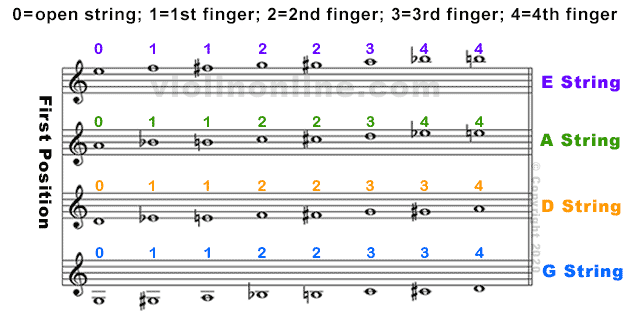
With our left hand, we can only place four fingers down before we’ve “run out” of fingers because our left thumb is just hanging out, helping us hold the violin in our left hand.

You place another finger down – another new note. So – you place one finger down, you get a new note. Once you place one finger down on the string, the string length shortens and thus the pitch goes higher, creating a new note. So when you play an “open” string, or a string by itself with no fingers pressing down, you will hear one note (G, D, A, or E).

When playing the violin, we use our left-hand fingers to press gently on the strings against the fingerboard to create new notes. How many notes can a violin play at once?.How many positions are there on a violin?.It includes the most common major and minor scales as well as pentatonic scales and dozens of scale variations to make scales enjoyable! Plus, I’ve included my handy Key Signature Quick Reference Guide so that never again will you wonder, “is this high 2 or low 2?” Sign up for my newsletter to get a copy of the free scale book. It’s great for beginners or intermediate players. If you want more violin scales in your life, check out my FREE scale book, Creative Scales for the Experimental Violinist. Use this advanced bowing or rhythm for the entire scale. Then pick one exercise from Bowing, Rhythms, and Dynamics for Scales below. If you also want to know why some notes are sharp and some aren’t, read about key signatures and minor scales.įor a typical warm-up, I choose a key and play the scale several times, starting with half notes or whole notes and gradually speeding up the duration of each note (see Daily Warm-Ups for Scales below).

Understanding the building blocks of scales can make playing scales so much easier. Scales are a great way to incorporate more advanced concepts like complicated bowings, accents, dynamics, and rhythms. I recommend staying in one key for a few days to master the finger pattern. Below are the main scales and arpeggios for the violin in first position. For a great violin warm-up, practice scales and arpeggios everyday.


 0 kommentar(er)
0 kommentar(er)
